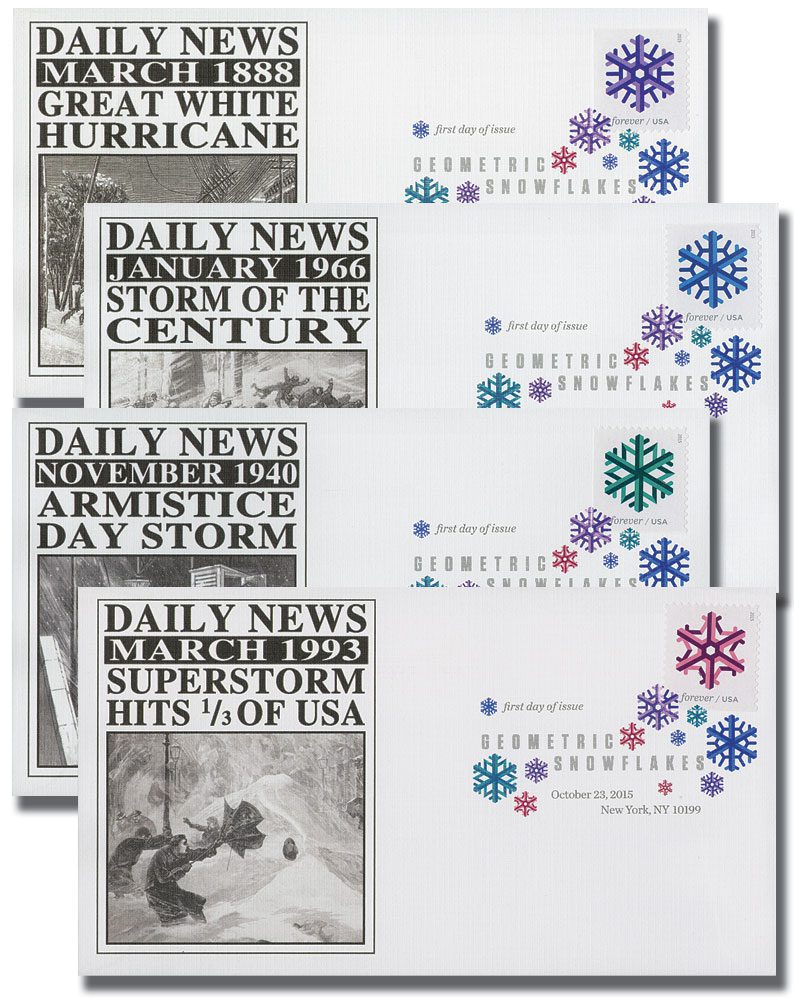On March 12, 1888, a short-lived blizzard mail service delivered letters to New York City during one of the worst storms in history.
Just two days before, on March 10, temperatures in the northeast were in the mid-50s. But the next day, cold Arctic air from Canada met with Gulf air from the south sending temperatures plummeting. The rain quickly became snow and winds reached hurricane-strength – about 85 miles per hour in New York City.
When the people of New York awoke on March 12, it was a complete whiteout. Some brave residents ventured out into the cold to board the city’s elevated trains to go to work, but the trains were blocked by snowdrifts and couldn’t move. About 15,000 people were stranded on these trains and had to be rescued by people with ladders. Above ground telegraph lines, water mains, and gas lines were also badly damaged and inoperable.
Because of the bad weather, mail service halted in New York City and the surrounding areas. However, the mail was so important to some businesses, they arranged for their own delivery! A.W. Seward and Dr. W.H. Mitchell hired a special messenger to take mail aboard the steamer Chancellor of the New Jersey Central Railroad from Bergen Point, Bayonne, to New York City. Over the course of four days, about 500 letters were transported. Much of the mail consisted of stories from newspaper reporters in Bayonne to their papers in the city.
To facilitate this special service, Seward and Mitchell also had about 500 special stamps printed. The stamps pictured the state of New Jersey coat of arms, “Blizzard Mail To,” “Five Cents,” and “N.Y.P.O.” Printed one at a time, the stamps were affixed to their letters along with the current 2¢ stamp.

By the time the storm ended, as much as 55 inches had fallen in some areas and over 400 people had died between Washington, DC, and Maine. Once the storm passed, officials recognized the issues of having the telegraph, water, and gas lines, as well as the trains above ground and began the process of moving them all underground.
Click here to view a Blizzard Mail stamp and click here to view photos from the blizzard.
| FREE printable This Day in History album pages Download a PDF of today’s article. Get a binder or other supplies to create your This Day in History album. |
Discover what else happened on This Day in History.





Can these first day covers still be purchased?
Click on the image to buy.